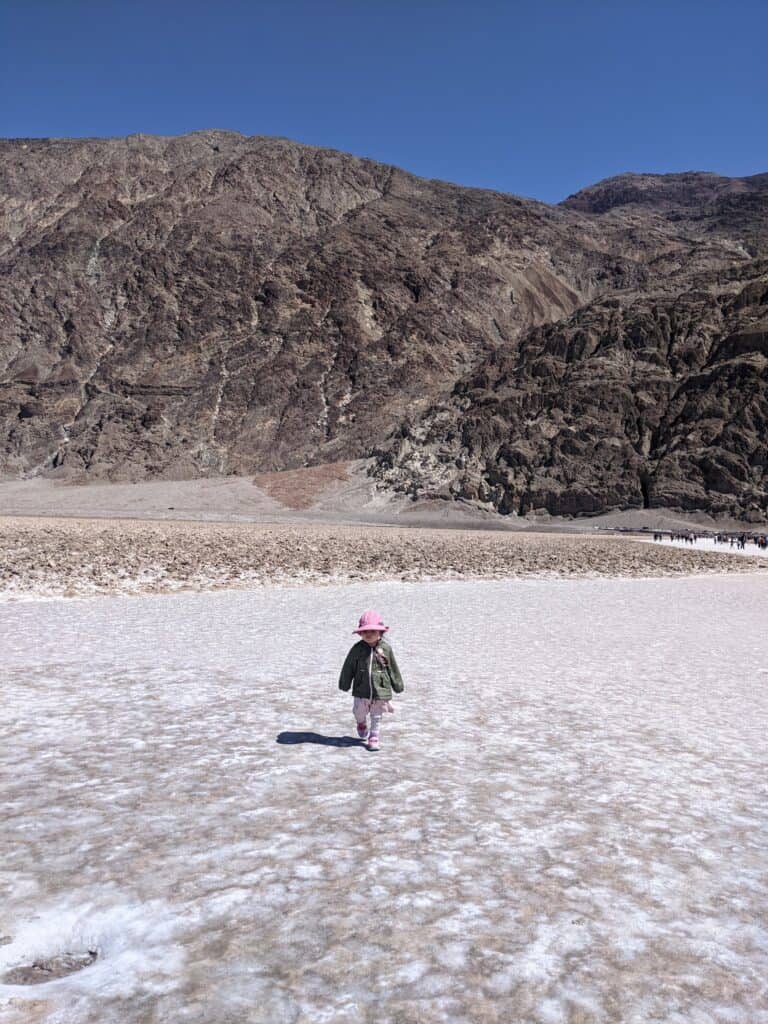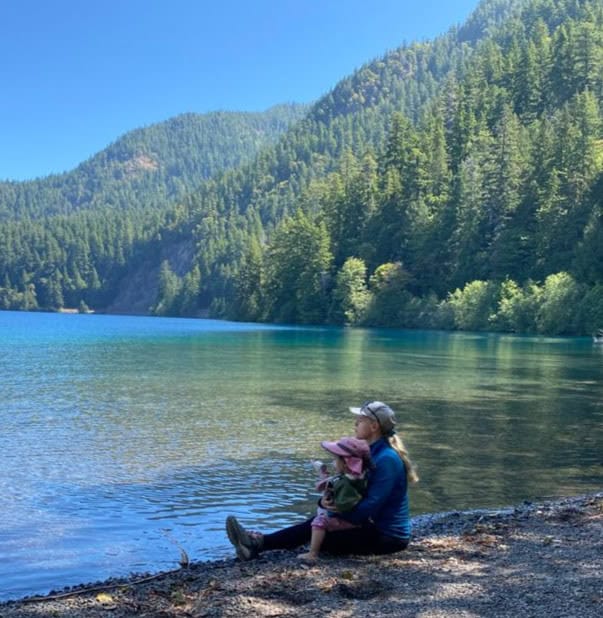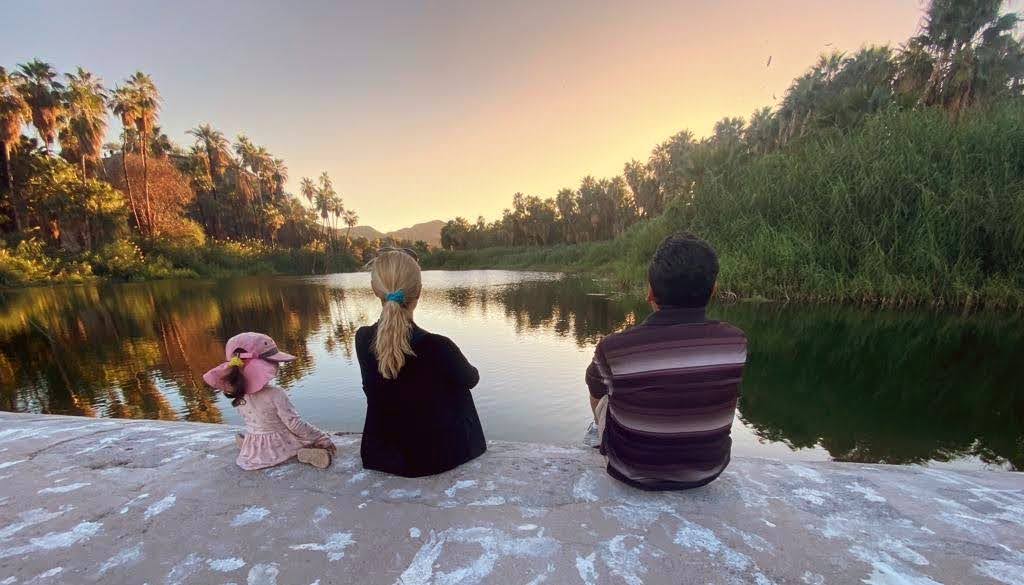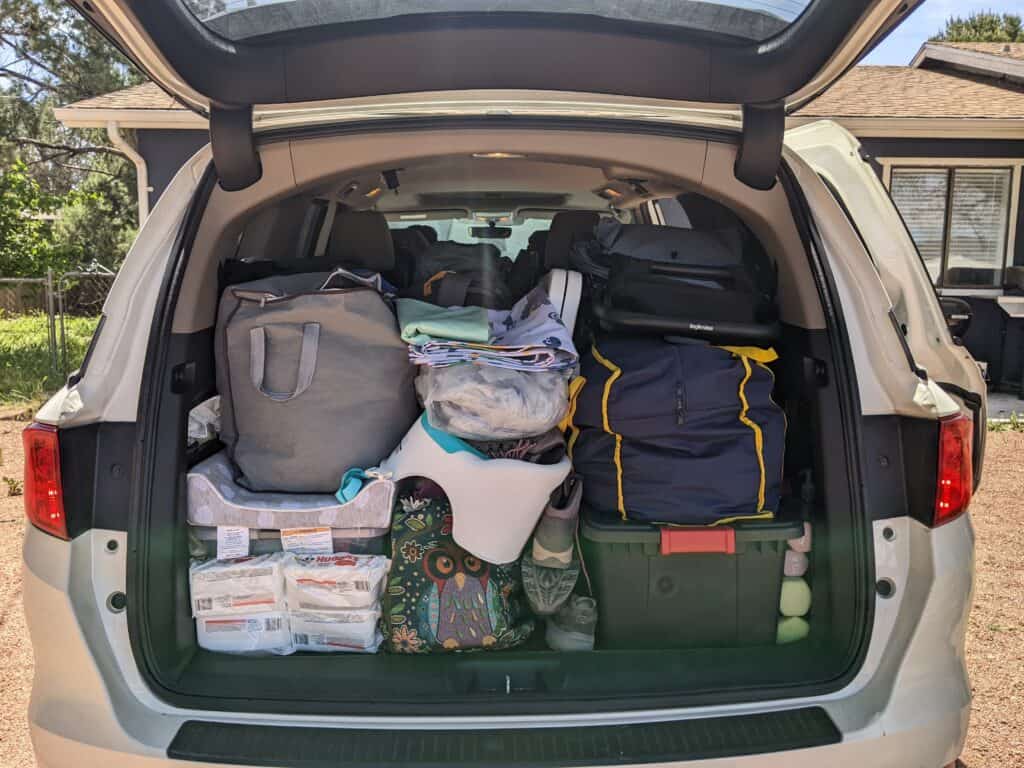Introduction
Being a digital nomad with kids offers plenty of benefits—like flexibility, cultural exposure, and a potential lower cost of living.
However, it also comes with challenges. From navigating education and logistics to ensuring financial stability and emotional well-being, raising kids on the road requires careful planning and adaptability.
What works for one family may not work for another, and before making the leap, it’s important to weigh the pros and cons.
In this guide, I’ll walk you through the pros and cons of being a digital nomad with kids, based on my own experience of nomad family life. Whether you’re just curious or seriously considering the switch, this breakdown will help you decide whether this lifestyle aligns with your family’s needs!

The Pros of Being a Digital Nomad with Kids
More Freedom and Flexibility
One of the biggest perks of being a digital nomad—especially with kids—is breaking free from rigid schedules. No more squeezing trips into that tiny PTO window or planning everything around school breaks.
Instead, you get to decide when and where you go, shaping your lifestyle around what works best for your family, not the other way around.
For us, that means blending work, travel, and education in a way that keeps life exciting and full of new experiences. One month, our daughter might be learning about marine life while snorkeling in Thailand; the next, she could be practicing Spanish at a café in Mexico City (okay, that’s an ambitious itinerary, but you get the idea!).
On the other hand, while life is full of stimulation and new experiences, you can slow down and take your time. Instead of rushing through a destination in five days, you can settle in, find your rhythm, and actually enjoy the experience. No more cramming adventures into a weekend—you can live them fully, every day.
Exposure to Different Cultures and Languages
One of the most incredible gifts of traveling with kids is watching them develop a global mindset. When they’re constantly exposed to new languages, customs, and ways of life, they start to see the world as a vast, interconnected place—not just their little hometown bubble.
Language learning, in particular, comes so much more naturally through immersion. Instead of memorizing vocabulary lists, they pick up phrases at the market, chatting with local kids at the park or ordering their favorite snack at a café. Before you know it, they’re switching between languages without even realizing it.
Beyond the languages, they also learn that there’s no single “right” way to live. Some cultures prioritize family time over work, others embrace a slower pace of life, and some celebrate things in ways they’ve never seen before.
These experiences shape adaptable, open-minded kids who grow into adults that see situations from multiple angles — which is a super valuable skill in today’s polarized world, in my book.
Personalized and Flexible Education Options
Another thing I love about being a digital nomad is that my daughter’s education isn’t confined to a classroom—it’s built around how she learns best. And you can make that choice for your kids, too.
Whether it’s homeschooling, world schooling, or online programs, you can tailor their education to fit their interests, strengths, and learning style.
Travel itself becomes one of the most powerful teaching tools. History comes alive when they’re standing in the ruins of Chichen Itza instead of just reading about it. Science feels real when they’re watching bioluminescent waves glow at night or exploring ecosystems at a national park. Hands-on learning like this sticks with them in a way no textbook ever could.
And for families who want more structure, some destinations have incredible international schools or co-ops specifically for nomadic kids.
These communities give them a chance to connect with other traveling families, build friendships, and still experience a bit of that traditional school setting—just with a global twist.

Build Amazing Memories as a Family
One of the biggest reasons families choose the digital nomad lifestyle is the chance to create unforgettable memories together.
When your life isn’t confined to the same routines, the experiences you share become more memorable, less expected, and sometimes even surreal—like the time we built a snowman on a Florida beach after a freak storm or finally tracked down the original fish taco stand in Baja California.
For kids, this kind of childhood is anything but ordinary. Every place you visit adds a new chapter to their upbringing, shaping them into curious, adventurous individuals.
And for parents, these moments are priceless. Watching your child take their first snorkeling dive in crystal-clear waters or taste a new favorite food for the first time is something no office job or predictable routine can replace.

More Family Time and Stronger Bonds
Another awesome aspect of being a digital nomad family is how much more time you actually get to spend together. Without the rigid 9-to-5 schedule, school drop-offs, and long commutes, your days become more about being together rather than just squeezing in family time between obligations.
You get to eat breakfast without rushing, take midday breaks for a swim, and end the day watching the sunset instead of sitting in traffic.
This extra time together naturally strengthens your bond as a family. Whether it’s navigating a foreign city, hiking through a national park, or simply figuring out where to grab lunch, you’re constantly problem-solving and exploring new things side by side. These shared adventures create a deep sense of teamwork and connection that’s hard to replicate in a traditional routine.
Of course, spending more time together also means learning how to balance personal space and alone time! But if your goal is to raise a family that truly knows and enjoys one another, the digital nomad lifestyle gives you more opportunities to connect in ways that a conventional schedule just doesn’t allow.

Growth Opportunities for Both Kids and Parents
Life on the road is full of surprises—but that’s where the real growth happens. When flights get canceled, accommodations don’t turn out as expected, or you find yourself lost in a new city, you have to problem-solve as a team.
Kids learn to be flexible and resourceful, watching as their parents navigate challenges and finding their own ways to adapt. Instead of fearing change, they develop the skills to thrive and embrace it.
Stepping outside of your comfort zone isn’t just for the kids—it’s a reality for parents too. You get used to making do without certain conveniences, and it’s a humbling reminder of how most of the world lives.
Having to get by with no dishwasher and no dryer for most of our 6 months in Mexico took some getting used to. But….when I finally walked into an Airbnb and saw not just a dishwasher, but a dryer too—it was time for a happy dance. These moments make you appreciate what you have in a way you never would have back home.
Ultimately, the digital nomad lifestyle teaches resilience, adaptability, and gratitude in ways that no classroom or office ever could. If you’re looking for a life that constantly challenges and stretches you, both as an individual and as a family, this path offers endless opportunities to grow—together.
Get to Travel More
This one might seem obvious, but it’s a game-changer—being a digital nomad with kids means you get to travel so much more than the standard two-week vacation allows!
There’s too much of the world to see to wait until retirement or try to cram it into a couple of trips a year while grinding away at a 9-to-5. With a location-independent lifestyle, travel isn’t just something you do; it becomes the way you live.

Lower Cost of Living in Some Destinations
Although many people might think of being a digital nomad as a glamorous lifestyle of jet-setting around the world, it doesn’t have to break the bank if you pick your destinations and create your itineraries carefully.
Being a digital nomad with kids gives you the flexibility to live in places where your money stretches further. Many destinations have a significantly lower cost of living than major cities in the U.S. or Western Europe, making it easier to afford a comfortable lifestyle. Instead of struggling to keep up with skyrocketing rent and expenses, you can live well while spending less.
Childcare and healthcare are also much more affordable in some regions. In places like Mexico, Thailand, or Portugal, for example, quality healthcare costs a fraction of what it does in the U.S. With lower expenses, you gain more financial freedom—allowing you to work less, save more, or splurge on experiences rather than just bills.
Teach Kids Minimalist Values
If you want to raise kids who value experiences over material things, the digital nomad lifestyle is the perfect setup. When you’re constantly on the move, every item you bring has to be intentional.
There’s no hoarding, no stockpiling, and no impulse shopping for things you don’t actually need. Well, there may be some impulse shopping, but you quickly learn that struggling to fit your new possessions in your bags is not worth it!
This naturally reduces the pressure to keep up with consumer culture. Your kids won’t be surrounded by peers showing off the latest toys, gadgets, or brand-name clothes. Instead, they’ll learn that happiness comes from adventures, relationships, and experiences—not from accumulating stuff.
And when they do get something new, it actually means something, because space is limited, and every item has to earn its place in your luggage!
Deepen Your Relationship with Your Partner
For couples doing this together, being digital nomads with kids can be an incredible way to strengthen your relationship. From figuring out logistics to tackling unexpected challenges, you become a true team, learning how to problem-solve and support each other in ways a more traditional lifestyle might not demand.
There’s also a deep sense of appreciation that comes with taking this leap together. It takes courage to leave behind stability and embrace the unknown, and knowing that your partner is just as adventurous as you (or at least willing to go along for the ride) creates a unique kind of bond.
Yes, there will be stressful moments, and you better like each other, because you will be spending a lot of time together! But there will also be amazing memories — like surviving your first long-haul flight together as a family (high fives all round), standing in awe of the bluest water you’ve ever seen, or simply sharing a quiet morning in a new place.

The Cons of Being a Digital Nomad with Kids
Stability and Routine Challenges
One challenging part of being a digital nomad with kids is maintaining a sense of routine. Constant travel can throw off sleep schedules, make it tough to establish daily rhythms, and be especially challenging for kids who thrive on consistency. Some children struggle with frequent changes in environment, making it harder for them to feel settled.
This will depend a lot on your kid’s personality, and also their age – for us, it hasn’t been too much of an issue, because our daughter started traveling very young, and we have found ways to give her a sense of stability within the change. But it’s definitely something to consider when thinking about whether this lifestyle is a good fit for your family.
It’s not just the kids who have to deal with these challenges — parents do too. When you’re constantly moving, establishing routines like regular workouts or meal planning can be difficult. Every time you arrive in a new place, you have to figure out where to get groceries, where to exercise, where your office is going to be, and so on. All the novelty can be exciting, but also exhausting.
Emotional Challenges for Kids
The excitement of new places is amazing, but it comes with a trade-off: constantly saying goodbye. Kids have to repeatedly leave behind new friends, and that can be tough, especially if they form strong attachments. Even in the age of video calls, long-distance friendships aren’t the same as having a consistent group of friends to grow up with.
While they gain incredible experiences on the road, they lose out on the stability that comes with staying in one place. Again, this really depends on the individual child. If your child craves consistency and familiarity, the nomadic lifestyle could cause stress or anxiety.
However, I’ve found that my daughter is incredibly adaptable, and she lives in the moment, appreciating friends and loved ones while they are here, and accepting the situation when they’re not (wish I could be more like that!)
Some children may also feel homesick or miss grandparents, cousins, and other extended family. However, this can vary based on your unique circumstances. For us, being able to travel around has actually meant our daughter has been able to spend more time with relatives, not less, as we are able to visit them more frequently.
Fatigue from Travel Planning and Packing Up
The logistics of full-time travel can be exhausting. Planning itineraries, figuring out where to stay, organizing transportation, and researching activities all take time and mental energy. After a while, decision fatigue sets in—there are only so many times you can weigh the pros and cons of different destinations before it starts to get a little old.
These days, I’ve started using AI tools to help streamline planning, which has helped a lot. Every new place brings an huge number of choices, and you just can’t do it all. Trying to maximize every destination can start to feel more like a job than an adventure, and all the time spent planning is time that could be spent enjoying the journey.

Difficult to Develop Roots and Maintain Relationships
There’s something to be said for growing up in one place—having childhood friends who you’ve known all your life, sharing memories of the same local hangouts, and feeling connected to a community. When you’re always on the move, kids don’t get that same experience. They make friends, but those friendships take work to maintain and may be short-lived.
If you value the idea of giving your kids a “hometown” experience, this may feel like a big trade-off. While they gain cultural exposure and adaptability, they miss out on the kind of deep, long-term friendships that come with staying in one place. Again, it depends on your values and what’s important to you.
Harder to Have Reliable, Consistent Childcare
Finding good childcare is challenging enough when you live in one place—but when you’re constantly relocating, it becomes an ongoing struggle. Each new city or country means starting the search from scratch, whether that’s looking for a babysitter, a daycare, or a short-term nanny.
Without a reliable childcare setup, it can be hard to be productive, especially if both parents are working remotely. It also makes it difficult to carve out time for self-care, date nights, or even just an uninterrupted work session.
When we started traveling full-time, both of us were working and we took turns working and watching our daughter. After a few years, we decided that my husband would become the full-time caregiver and I would continue working. That has worked out much better for us.
Balancing Work, Learning, and Travel Can Be Challenging
Juggling remote work, homeschooling (or online schooling), and travel is no small feat. It requires strong time management to keep everything running smoothly, and flexibility to roll with the punches if things change (and they will change!) Some days, work deadlines and school lessons go out the window because of travel delays or unexpected changes.
Unreliable internet and time zone differences can also throw off work schedules, making it hard to stay on top of things. It’s a constant balancing act, and some days, it feels like there just aren’t enough hours to fit everything in.
Because that is the kind of grind we were trying to escape, for us it was important to address this challenge so it didn’t ruin the experience.
By being intentional about what we were really trying to achieve with this lifestyle, and not trying to do everything, we were able to feel less pressure to be perfect with the juggling. Now I do more ‘going with the flow’ (easier said than done for someone who likes to be in control!). I also follow my husband’s advice, which is, for every place we visit, leave a reason to come back. That takes off the pressure to do absolutely everything in your one visit! (not possible and stress-inducing).
Legal and Visa Complexities
Long-term travel isn’t as simple as hopping on a plane—visas, work permits, and residency rules vary by country and can be complicated to navigate. Some places allow digital nomads to stay for months, while others require frequent visa renewals.
Tax laws can also be tricky. Depending on your home country’s regulations, you may still owe taxes even if you’re living abroad. And when it comes to healthcare, not all travel insurance plans cover long-term nomadic living, so you have to plan ahead to ensure you’re protected.

Negativity from Those Around You Judging the Lifestyle
While some people will admire your decision to travel full-time with kids, others will judge you—sometimes harshly. A quick scroll through Reddit or parenting forums will show you the common criticisms: How can you deprive your kids of stability? Aren’t you being selfish? What about their education and socialization?
Even if you know this lifestyle is what’s best for your family, the judgment can still sting. Parenting already comes with enough guilt, and having to defend your choices can add an extra layer of stress. It helps to surround yourself with like-minded families who understand the trade-offs and benefits of this lifestyle.
Is Being a Digital Nomad with Kids Right for Your Family?
There’s no one-size-fits-all answer to whether a digital nomad lifestyle is right for your family—it all depends on your circumstances, values, and priorities.
Before making the leap, it’s important to take a hard look at the key factors that will shape your experience. Do you have financial stability and work flexibility that will allow you to sustain this lifestyle? Have you thought through how you’ll handle your kids’ education on the road? And perhaps most importantly, how does your family (and especially your kids) deal with change?
Personality plays a huge role in whether this lifestyle is a good fit. Some families thrive, quickly embracing a life of less stuff and more adventure. Others may find the uncertainty, frequent transitions, and lack of roots too overwhelming.
Think about your kids—do they adapt easily to new environments, or do they crave consistency? And as parents, how do you feel about constant change? Do you find the prospect of adapting to new situations and challenges exciting or exhausting, or maybe a bit of both?
If you’re unsure, consider testing the waters before going all in. A short-term trip—maybe a month or two—can give you a sense of what works and what doesn’t without making a long-term commitment. You may find that you love it and want to dive in fully, or you may realize that you prefer a slower, more rooted lifestyle.
And remember, it doesn’t have to be all or nothing. Many families find a balance with slow travel, staying in one place for months at a time before moving on. Others embrace part-time nomadism, spending part of the year traveling and part of the year in a home base.
The key is to find an approach that aligns with your family’s needs, allowing you to experience adventure while maintaining the stability that helps everyone thrive.
Conclusion: The Digital Nomad Life with Kids – A Rewarding but Challenging Adventure
Becoming a digital nomad with kids comes with a lot of amazing benefits, offering freedom, growth for kids and parents, and unforgettable experiences. However, it’s not without its challenges.
The constant change and logistical hurdles mean it’s not for everyone. What works for one family may not work for another, and the key to success lies in careful planning, adaptability, and understanding your own family’s needs.
Ultimately, there’s no one-size-fits-all answer, but with the right preparation and mindset, this lifestyle can be an incredibly fulfilling journey. Think it might be for you? Read my complete guide to becoming a digital nomad with kids.



